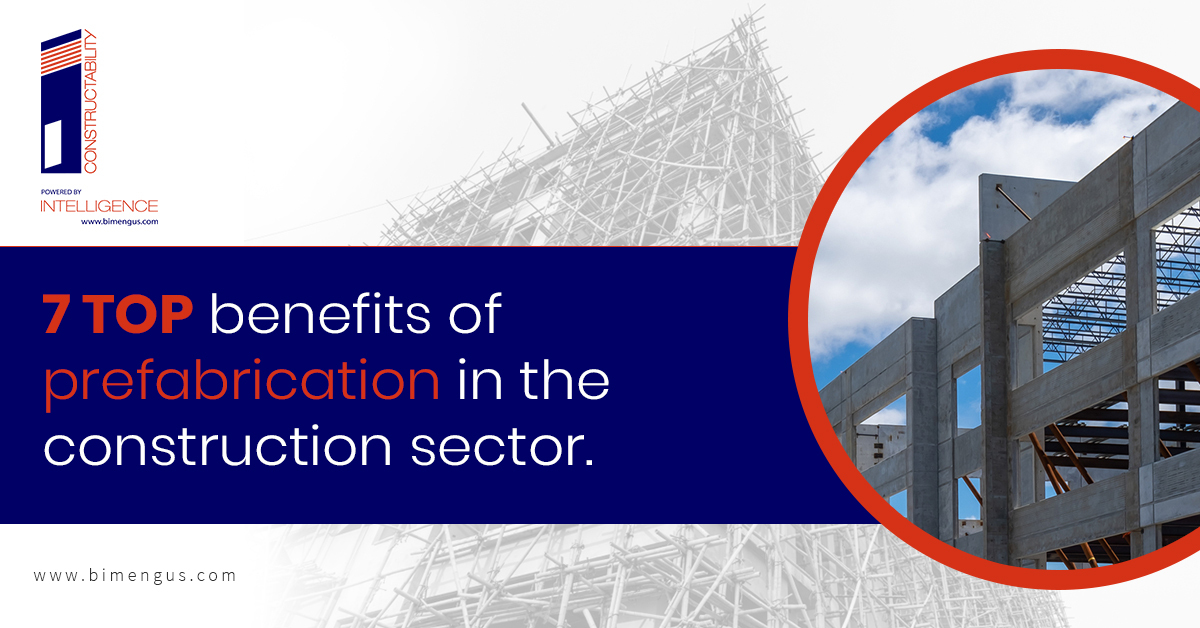Making building parts or components offsite and relocating them to the final construction site has accelerated construction speed by more than 50%. It has also led to stakeholder’s cost savings of more than 30% and has consequently reduced labor charges by more than 25%.
Based on a report by McKinsey, the prefabricated or modular construction business or market will peak at a whopping $130 billion by the year 2030. Prefabricated components boost onsite construction whilst enabling contractors and sub-contractors to install accurately fabricated components with the right dimensional tolerances to avoid hard and soft clashes.
BIM has proved to be a significant tool to push prefabrication in the right direction. It is reshaping the way fabricators manufacture buildings systems or components- be it doors, windows, roofs, or complex MEP systems. With accurate & detailed fabrication drawings extracted from coordinated and clash-free 3D BIM models, fabricators have the right set of deliverables to manufacture dimensionally accurate onsite deliverables. This drives:
- significant boost in job site productivity
- greater component standardization
- fewer onsite clashes
- better installation safety
- reduced rework
- enhanced project and logistics scheduling
- accurate cost estimates
- lower project delays
- reduction in material waste
- better build quality
Modular construction has proved to be cost-efficient in the US and UK, as there is a need for speedy construction and renovation. Listed below is a snapshot of 7 promising benefits of prefabrication for quick project construction.
- Better sustainability with advanced tools
- Greater job site safety and security
- Highly cost-effective
- Improved quality control and consistency
- Surpassed flexibility for general contractors
- Healthier or Green Building
- Sizeable time and cost savings
#1. Better sustainability with advanced tools.
Modularization or prefabrication has delivered unmatched sustainability by reinforcing the process with tools like BIM. BIM combines the power of processes and software to help architects, designers, engineers, general contractors, and other stakeholders visualize and build through collaborative efforts and coordinated and clash-free 3D models. Construction visualization based on 3D models and walkthroughs can help reduce construction, material, and labor costs leading to greater efficiency and sustainability.
#2. Greater job site safety and security.
Onsite construction is a dangerous process, thus, safety and security are crucial factors that require complete attention. Building components onsite can lead to degradation of component integrity through moisture, changing weather conditions, dirt, etc. Fabricating building systems or components in a controlled environment helps preserve the quality of fabrication thereby enhancing job site safety and security. As construction sites need to prioritize safety, modular or prefabricated components reduce the chance of injuries with quick installation and reduced time on site.
#3. Highly cost-effective.
The construction sector is highly complex and competitive and requires quick construction to save on stakeholder costs. Prefabrication reduces labor and material costs leading to millions in cost savings, further neutralizing the high cost of building materials.
#4. Improved quality control and consistency.
Prefabricated sub-assemblies manufactured in a controlled environment conform to uniform quality. Laborers working on site have a definite set of skills for the installation of components, rather than fabrication of systems or components. Manufacturing parts or systems in controlled conditions helps uphold fabrication quality through the entire build process.
#5. Surpassed flexibility for general contractors.
With accurate components manufactured in an offsite facility, general contractors do not have to worry about dimensional inaccuracies in structural design. This helps general contractors be more creative to achieve winning onsite installation. Parts and systems can be relocated and assembled to various locations for quick assembly and installation.
#6. Healthier or Green Building.
Compared to traditional fabrication techniques, prefabrication or modular construction promotes green building based on reduced material wastage. It has a lower environmental impact based on better prefabrication filtration, insulation, etc. which enhances energy efficiency.
#7. Sizeable time and cost savings.
Prefabrication takes significantly less amount of time to assemble and install. It takes less than half the time compared to traditional fabrication and installation. Modular construction involves accurate planning and simultaneous fabrication of various building assemblies. Shorter onsite construction time enables AEC companies and contractors to take on various projects for greater business growth.
China built a special 1000 bed hospital in 10 days to treat Corona-infected patients in Feb 2020. This was achieved through aggressive prefabrication of building components. Furthermore, China again utilized the power of prefabrication to build a 10-storey earthquake-resistant building in 28 hours in 2021. Rooms and other modules were fabricated offsite and relocated onsite through truck transportation. Essential Mechanical, Electrical, and Plumbing systems were connected easily to make the building ready to use.
Conclusion.
Prefabrication reinforced with the power of BIM will continue to speed up building construction to a matter of a few months or days. AEC companies and general contractors working on fast-track projects will turn to model-driven prefabrication for virtual job site planning, project execution, safety planning, enhanced building performance, model-based material procurement, etc.
